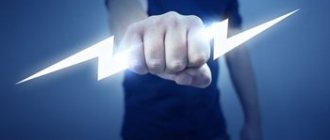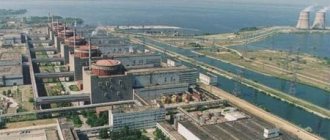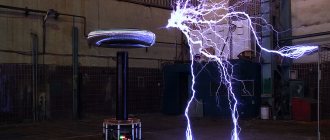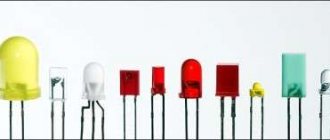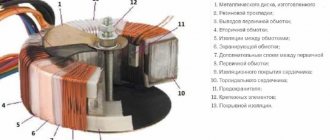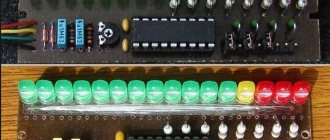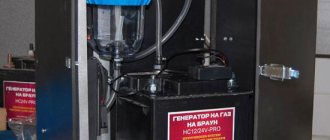For home
The owner of a country house, even if there is a traditional power supply system, sometimes has a desire to reduce the cost of paying bills for consumed electrical energy. Some developers create a completely autonomous system and become independent from electricity suppliers. This power supply system is especially relevant for remote places where there are no stationary power supply networks. Currently, thanks to the development of technology and technology, installations using alternative energy sources, such as solar, wind, water and biofuels, have become widespread. When producing your own electricity, used to power your home, all of the above energy sources can be used.
Energy of sun
When choosing installations that use solar energy as a source of electrical energy, you need to know the features of the location, which determine the number of sunny days per year.
Modern Stirling Engine - Can also be seen as a way to get your own electricity - system efficiency up to 34%!
Devices used to convert solar energy into electrical energy are solar panels (batteries), which, depending on the required power, are combined into groups. The panels consist of photocells placed in a common housing. The principle of operation is based on the properties of photocells to create a potential difference between their layers when exposed to sunlight.
Solar panels are the main element of solar power plants, which, in addition to them, include the following elements:
- A rechargeable battery (battery pack) is a storage device for electrical energy.
- The controller is an electronic device responsible for the charging and discharging process of the battery.
- An inverter is also an electronic device that converts direct electric current accumulated in a battery into alternating current with a voltage of 220 V.
- Protection devices and automation devices, as well as connecting wires.
As additional equipment to increase the efficiency of solar power plants, solar trackers are used - devices that allow you to determine the position of the panels in space, in accordance with the location of the sun.
Wind energy
When choosing an alternative energy source, which will be wind, it is also necessary to know what winds and what strength are blowing at the location where the equipment is installed. Devices that convert wind energy into electrical energy are wind generators. These technical devices differ in power, performance, installation conditions and design, on which all the previously listed indicators depend.
Wind generators are:
- With a horizontal axis of rotation - the rotor axis and the drive axis are parallel to the surface of the earth. There are single-bladed, two-bladed, three-bladed and multi-bladed, with the number of blades up to 50 pieces.
- With a vertical axis of rotation - the axis of rotation is located vertically relative to the surface of the earth. These devices differ in technical design: with a Savounis rotor, with a Darrieus rotor, with a helicoidal rotor, with a multi-blade rotor and with an orthogonal rotor.
- Wind generator - sail.
All of the listed devices have their own advantages and disadvantages, so the choice is always up to the user, which can be made based on selection criteria and individual needs.
Water energy
Living outside the city and having a small river, stream or other body of water nearby, you can use the energy of water to generate your own electricity. In this case, it is necessary to build an individual micro-hydroelectric power station. Equipment for such installations is produced in various capacities, and even a small stream can meet the electrical energy needs of a home.
Micro-hydroelectric power plants are bottled in:
- Type: dam, diversion, dam-diversion and free-flow.
- Operating principle: "water wheel" principle, garland design, using Darrieus rotor and using the propeller principle.
- Installation capacity and equipment installation conditions.
Each type of micro-hydroelectric power station and the principle of its operation have their own pros and cons, which determine the choice of equipment and the possibility of use in a particular case.
Biofuel
Living side by side with wildlife, there is always the opportunity to construct a biofuel production plant. Biofuels come in solid, liquid and gaseous forms.
It is not advisable to consider solid fuel (ordinary firewood) and liquid fuel, which requires special equipment for production, as sources of electrical energy, but gaseous fuel can.
Gaseous biofuel is biogas obtained as a result of fermentation of substances of plant or animal origin, which are always available in the household. The fermentation process occurs under the influence of bacteria in a hermetically sealed container. The gas thus obtained is sent for combustion. When gas is burned, the steam generator produces enough steam to rotate a steam turbine connected to an electrical generator that produces electric current.
Earth energy
On the territory of our country, there are places where activity continues in the deep layers of our planet (in the surface of the earth). In such regions, earth energy can be used as an alternative source of electrical energy.
Depending on the source that gives off its heat, such energy is divided into:
- Petrothermal - the source of energy is layers of the earth that have a high temperature;
- Hydrothermal - the source of energy is groundwater.
The earth's energy, in the form of steam, is supplied to a steam turbine, which is connected to an electrical generator that produces electric current.
In the case of individual use, only the method of using direct action is possible, when steam comes directly from the surface of the earth.
Other options, indirect and mixed methods, can only be used in industrial methods of energy processing.
All the options discussed above for using alternative energy sources to produce their own electricity are available to users, provided that the necessary conditions for their operation are created.
To create independent power supply systems, it is better to use several alternative energy sources simultaneously to compensate for the possible difficulties of each method of generating electricity separately.
Quite widely, for autonomous power supply to houses, the wind generator + solar power plant scheme is used.
A little theory
Device "on fingers"
Schematic structure of a galvanic cell.
Let us assume that we have a container with acid with zinc and copper electrodes immersed in it (Fig.). When the cell produces electrical current through an external circuit, the zinc on the surface of the zinc electrode dissolves into solution. Zinc atoms dissolve in the electrolyte as electrically charged ions (Zn2+), leaving 2 negatively charged electrons (e—) in the metal
Zn → Zn2+ + 2e—
This reaction is called oxidation.
While the zinc enters the electrolyte, two positively charged hydrogen ions (H+) from the electrolyte combine with two electrons on the surface of the copper electrode to form a hydrogen molecule (H2)
2H+ + 2e— → H2.
This reaction is called recovery.
The electrons used at the copper electrode to form hydrogen molecules are transferred from the zinc electrode through an external wire connecting the copper and zinc electrodes. Hydrogen molecules formed on the copper surface as a result of the reduction reaction are released in the form of hydrogen gas.
About electrolyte
The voltage across the cell depends on the acidity of the electrolyte, measured by its pH. A decrease in acidity (increase in pH) causes a voltage drop. The acid used does not affect the voltage other than through the pH value. This is not true for strongly acidic electrolytes (pH <3.4), where the zinc electrode dissolves in the electrolyte, even when the circuit is open. The two redox reactions listed above only occur when electrical charge can be transferred through an external circuit.
About electrodes
From chemistry: a number of metal voltages are used in practice for the relative assessment of the chemical activity of metals in reactions with aqueous solutions of salts and acids and for the assessment of cathodic and anodic processes during electrolysis. The reducing activity of metals (the ability to donate electrons) decreases, and the oxidizing ability of their cations (the ability to gain electrons) increases in the indicated row from left to right. Metals to the left are stronger reducing agents than metals to the right: they displace the latter from salt solutions. For example, the interaction Zn + Cu2+ → Zn2+ + Cu is possible only in the forward direction. Zinc displaces copper from an aqueous solution of its salt. In this case, the zinc plate dissolves, and metallic copper is released from the solution.
The most common metals are arranged in a series of voltages in the following sequence: Li, K, Ca, Na, Mg, Al, Mn, Zn, Fe, Co, Ni, Sn, Pb, ( H2) , Cu, Hg, Ag, Au.
In total, the farther the metals are from each other in this row, the greater the voltage that arises between them.
Theoretical conclusions
- It turns out that the energy comes not from the lemon or potato, but from the chemical change in zinc when it dissolves in acid.
- The higher the acidity (less pH) of the electrolyte (but up to pH <3.4), the higher the voltage
- The farther the electrodes are from each other in the voltage series, the higher the voltage
- Between identical electrodes the voltage should be 0
- There is no need to talk about significant current strength in such experiments. It is, of course, directly proportional to the area of the electrodes, but this area is such that to obtain an analogue of the average car battery would require several million cells from lemons.
You can start checking.
For apartment
If there is a desire to create an independent power supply system for a single apartment, in an apartment building, it is impossible to use such sources as: biofuel, earth energy, water energy, and wind energy, it is also difficult to use.
The only source of energy that can be used to generate your own electricity in a separate apartment, without creating inconvenience for neighbors, is the use of solar energy.
The industry produces sets of solar power plants of low power, which can easily be placed in an apartment. Solar panels, in this case, are placed on the roof of an apartment building or on the external facade, if it is located on the south side of the house.
A solar power plant kit, not very powerful, consists of the same elements as for powering a house, the only difference is in the number of solar panels and batteries.
Coin battery
A structure made of coins as the simplest galvanic element is also called a Voltaic column. To make it you will need:
- copper coins (for example, 10 or 50 kopecks);
- foil;
- paper;
- vinegar or very salty water.
For the beauty of the design, it is necessary to choose coins of the same denomination. Also, before the experiment, dip them briefly in vinegar. This will remove plaque and dirt. Then you need to cut out elements in the shape of coins from paper and foil. Their number should be 2 less than coins.
The voltaic column is assembled like this:
- The paper is soaked in a solution of vinegar or salt water and attached to a coin.
- A circle of foil is placed on top of the paper.
- Next, the next coin is placed.
- The stages are repeated until the selected amount of coins runs out.
- The design should be such that at one end there is a coin (+) as the last element, and at the other end there is foil (-).
The more coins are used in the experiment, the more voltage the battery will produce. It is important to understand that after the experiment, the coins may not be suitable for use. Elements may become rusty.
Options for a summer residence
If it is necessary to create an independent power supply for a dacha, the option of using a solar power plant is also the most acceptable. In this case, if the equipment is used seasonally, it is possible to mothball the devices or take them out of operation for the period when there is no need for operation.
The option of building a wind generator is also quite affordable and justified. Because having incurred some one-time financial expenses, in the future you can, depending on your needs, receive your own electricity.
The option of using the “wind generator + solar power plant” scheme is also relevant in this case, and allows you to create a completely autonomous and reliable power supply scheme.
How to make it yourself
The sets of equipment described above are quite expensive, so creative people with engineering savvy sometimes have thoughts about how to make this or that device with their own hands.
In order to make a unit capable of producing electrical energy using alternative energy sources, it is necessary:
- Have basic knowledge of electrical engineering and electrical networks;
- Possess skills in working with hand mechanical and electrical tools;
- Be able to work with a soldering iron;
- Have free time and, most importantly, the desire to create your own device capable of generating electricity.
If you choose the sun's rays as an energy source, then you need to make a receiving panel - a solar battery. There are several ways you can do this:
- Purchase photocells and connect them in a certain way (done by soldering). Make a panel body in accordance with the dimensions of the assembled receiver, into which to place the photocells. With this manufacturing option, it is possible to produce a fairly efficient device that can provide electrical energy to a small cottage that is not used for a long time.
- When the load power is low, when you need to charge a cell phone or other electronic device, you can make a solar panel from used diodes or transistors.
- When using transistors, the covers of the transistors are cut off and the transistors themselves are connected in series. The transistors are placed in a separate housing, and leads are soldered to their ends. The device operates when sunlight hits the “pn” junction of the transistors.
- When using diodes, you will need a large number of them and an electronic board, which is used as a substrate. The upper part of the diodes is cut off and using a soldering iron, the crystal is removed from the housing. The crystals are soldered sequentially, on a substrate, into separate blocks. The blocks are connected to each other in parallel.
- It is best to purchase batteries and electronic devices (charge controller and inverter), if they need to be installed, although if desired, electronic devices can also be made independently. If you choose wind, water, biofuels and earth energy as an energy source, then the production of technical devices capable of generating their own electricity is also possible.
Hydroelectric power plants
Hydroelectric power is used most rarely as an autonomous power source for one simple reason: not everyone has a river or a powerful stream flowing near their house.
The essence of the operation of such a station is that water rotates the turbine blades, due to which the generator generates electricity.
The positive qualities of hydroelectric power stations are as follows: a stable supply of energy around the clock, since the water in a river or stream does not slow down the speed of movement. Such stations are completely environmentally friendly, durable and require virtually no maintenance.
Their main disadvantage is the need to install them on the bank of a river or near a stream. In this case, the speed of water movement should be high.
A hydroelectric station is capable of generating energy even with slow water movement, but in this case the river will be covered with ice in winter, and it will no longer be possible to use the station.
High water speed will guarantee that the river or stream will not freeze. The second disadvantage is the cost of the station.
And yet, the concept of providing a home with an autonomous energy supply system is promising and many are interested in it.
Above we looked at the main types of sources of electricity, but they alone are not enough to have electricity in the house.
Additionally, it is worth noting that the effectiveness of any autonomous system depends on the correctness of the calculations.
Wind generator from a room fan
The simplest wind generator can be made from an ordinary household fan. To do this, you will need a small generator from a vehicle or an engine-generator, which must be mounted on a room fan stand. To do this, you can use any plastic container, inside of which the converting device is placed. At the edge of this, a diode bridge is placed in the container, to which wires are connected, which are brought out to the outer surface of the container.
Fan blades are placed on the shaft of the generator (motor-generator), and a shank is attached to a plastic container, which can be made from scrap materials (plastic, plywood, plexiglass, etc.).
The entire assembled structure is placed on the fan stand; for this you can use a piece of plastic or other light pipe with a diameter slightly smaller than the hole in the stand. This will allow the structure to rotate around its axis, depending on the direction of the wind.
The fastening of parts and assemblies is checked, and if necessary, they are strengthened. A load is connected to the output wires. The device is ready for use.
Battery in an aluminum can
To create a battery with your own hands in an aluminum can, you need to take:
- an aluminum can (for example, a Coca-Cola can);
- coal from a fire in the form of crumbs or dust;
- paraffin candle;
- graphite rod;
- salt and water;
- foam more than 1 cm thick.
First you need to cut off the top of the can. Then make a circle out of foam plastic that fits the bottom of the jar. It is necessary to make a non-through hole in the circle for the rod. Place polystyrene foam at the bottom of the jar and stick graphite into it. It is important that the rod is positioned exactly in the center of the jar. The space around the graphite rod must be filled with coal.
Important! The graphite rod should not touch the can.
Then all that remains is to make a saline solution using 0.5 liters of water and 3 tbsp. spoons of table salt. Stir the solution until the salt crystals dissolve, it is better to do this in warm water. Pour the electrolyte into the jar and seal it with wax. It is important that the graphite rod looks outside the can.
Connect the wires to the graphite rod (cathode, plus), and the body of the aluminum can (anode, minus). In order to obtain a voltage of 3 Volts, you must connect at least 2 cans in series. The resulting battery can power a light bulb, calculator and watch. They can also be recharged.
Your own electricity and your own water
Living outside the city, and having a small river or stream near your home or dacha, you can always provide yourself not only with water, but also with your own electricity. Of course, you can purchase a set of micro-hydroelectric power stations, which are quite widely represented on the domestic market, but you can make a similar device with your own hands. The design can be simple or complex, it all depends on the need for electrical energy, as well as on the type of reservoir, i.e. the ability of water to create pressure in a given direction.
To make the simplest design, you will need a car generator, a bicycle or other wheel, a pair of pulleys of different diameters or sprockets, as well as a metal profile (angle), which is available.
The mounting structure for the wheel and generator is made from a metal profile. The wheel can be positioned parallel or perpendicular to the plane of the water, it depends on the type of reservoir. Blades made of metal, plastic, plywood or other material are attached to the wheel. A pulley (sprocket) of larger diameter is attached to the wheel axle.
The generator is mounted, and a pulley (sprocket) of smaller diameter is attached to its shaft. The pulleys are connected by a belt drive, the sprockets by a chain. Wires are connected to the generator terminals. The wheel is placed in water. The installation is ready for use.
Electricity from two rods
This method is based on a completely different theory and has nothing to do with the Earth’s magnetic or electric field. And this theory is about the interaction of galvanic pairs in a saline solution. If you take two rods of different metals and immerse them in such a solution (electrolyte), a potential difference will appear at the ends. Its value depends on many factors: composition, saturation and temperature of the electrolyte, size of the electrodes, immersion depth, and so on.
Such generation of electricity is also possible through the ground. We take 2 rods from different metals, forming a so-called galvanic pair: aluminum and copper. We immerse them in the ground to a depth of approximately half a meter, keeping the distance between the electrodes small, 20-30 cm is enough. We water the area of land between them generously with saline solution and after 5-10 minutes we take measurements with an electronic voltmeter. The meter readings may vary, but at best you will get 3V.
Note. The voltmeter readings depend on the soil moisture, its natural salt content, the size of the rods and the depth of their immersion.
In fact, everything is simple, the resulting free electricity is the result of the interaction of a galvanic couple, in which moist earth served as an electrolyte, the principle is similar to the operation of a salt battery. A real experiment about the potential difference across electrodes driven into the ground can be seen in the video:
Features of installation and operation of autonomous sources
In order to install an alternative source of electrical energy on your country plot, cottage or apartment, you do not need to obtain any permits or approvals. It is the right of each user to determine for himself how to provide himself and his loved ones with electricity.
However, when constructing devices with high power, it is necessary to take into account factors affecting the environment and nearby neighbors.
So when using:
- Solar energy - when placing a large number of solar panels, significant areas will be required, and therefore, it may be necessary to draw up documents for additional land plots.
- Wind energy - it is necessary to take into account that wind generators, during operation, emit noise, which can negatively affect others.
- Water energy - in the case of a dam, a certain amount of land is taken out of service, which must be taken into account during construction.
- Biofuels - when producing the gaseous form of this energy source, smell is a constant component of the production process. This must be taken into account when creating this method of producing electrical energy.
In addition to the fact that there are no prohibitions on the installation of equipment producing electrical energy using alternative sources, there is also a law according to which every citizen who has installed equipment with a power of up to 30.0 kW, and receives excess electrical energy that he himself does not can use - has the right to sell it to third-party consumers. This right is called the “Green Tariff”.
